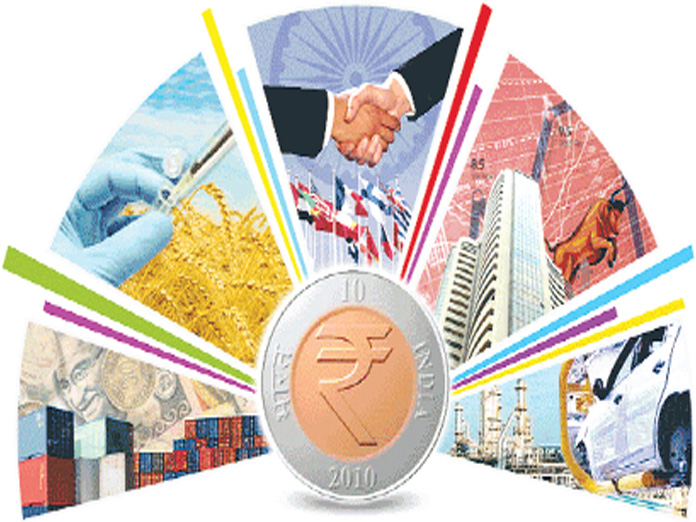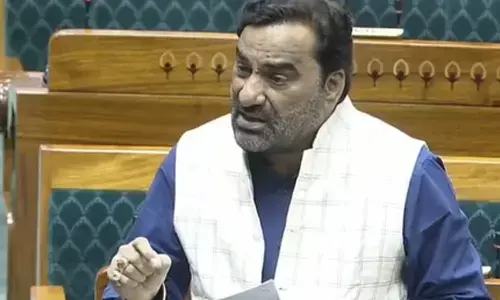Liberate Indian economy from bureaucracy’s kiss of death

The world economy has been growing at a respectable rate of about 35 percent for the last six years It has been especially buoyed in the last two years by the aggressive policies adopted by US President Donald Trump He has stimulated the United States economy by giving hefty tax cuts to big corporations
The world economy has been growing at a respectable rate of about 3.5 percent for the last six years. It has been especially buoyed in the last two years by the aggressive policies adopted by US President Donald Trump. He has stimulated the United States economy by giving hefty tax cuts to big corporations.
The corporations have shifted their headquarters and operations to the US. The Conference Board, an independent organisation, expects the US growth rate to increase from 3.1 percent in 2018 to 3.2 percent in 2019. Large numbers of jobs have been created in the US. This has led to ‘overheating’ of the economy. The US Federal Reserve Board, which is equivalent to our Reserve Bank of India, has increased the interest rates four times in 2018 and has given indications that it may increase them two times in 2019. This increase in the US interest rates has a deep significance for India.
Global investors are looking for high returns with safety. Both these objectives are happily secured by investing in the US. The US has about one-fourth share in the world economy and is considered safe. Till about two years ago, the rates of interest in the US were near zero. It was not profitable for global investors to invest in that country in that circumstance.
The situation has changed with the increase in interest rates in 2018. Global investors are withdrawing from the emerging markets like India which are considered relatively unsafe and investing their monies in the US. Thus, we may see continuation of selloff by Foreign Investors in India. Thus, our present strategy of pushing economic growth by relying on foreign investments is likely to falter.
The second global trend unleashed by the same President Trump is that of protectionism. The tax cuts have made it possible for the corporates to continue to pay the high salaries to the US workers as previously. The workers have, in turn, purchased goods like footballs and services like health from the market. Goods like footballs can be provided cheap from imports from developing countries like Vietnam and India. This is leading to more imports into the US.
On the other hand, the high wages of US workers make the cost of production high in the US and the exports are under pressure. This is leading to an increase in the US trade deficit. The purchase of services like health can be provided only from hospitals located in the US. These are leading to the creation of jobs. Thus, we have a combination of increasing trade deficit and job creation taking place in the US at the same time.
Of these two, the increase in import of goods into the US is important for India. The present trade war that Trump has initiated with China is to prevent these imports coming into the US. The import duties imposed by the US on steel imported from India is part of the same sequence of events. Therefore, the present increase in imports of goods into the US is likely to be followed by a shrill trade war and a consequently India’s exports to the US will come under stress in 2019.
We have to make our economic strategy in this backdrop. Our present approach is to open our economy both to foreign investments and foreign trade. Foreign investments will come under stress because of the increase in interest rates in the US. Our situation will further deteriorate because outflow of our capital will speed up. Indian investors, like their global counterparts, will find it profitable to invest in the US instead of India. A report by Business Today datelined October says, “Foreign institutional investors have given Indian capital markets a big thumbs-down this year, withdrawing Rs 90,746 crore so far, the highest ever. Interest rate hike by Federal Reserve and a falling rupee led the FIIs out of the Indian market.”
Our exports will also come under trouble because of protectionism in the US. At the same time, our imports will surge because we are holding on to free trade. We are maintaining low import duties on goods imported from China while other countries like the US are increasing import duties on goods exported by us. The result will be an increase in our trade deficit which has already been increasing. The Trading Economics website writes, India’s “trade deficit widened to USD 16.67 billion in November of 2018 from USD 15.1 billion a year earlier.”
We have to make our economic policies for 2019 in this backdrop. The outflow of foreign investments and the surge in imports is likely to continue. The trade war shows no signs of dying. There are signs that protectionism may spread. The United Kingdom is to leave the European Union in March this year. President Trump continues his harangue against Iran. Therefore, our present troubles of capital outflows and increasing trade deficit will only get worse.
The government must see these writings on the wall and make a course correction immediately. Our present strategy is to control government expenditures and keep reducing the fiscal deficit so that foreign investors continue to invest in India. Foreign capital was seen as the growth engine. But it has instead deflated our balloon. The progressive reduction in fiscal deficit in the last few years has not led to inflows.
Instead, outflows have increased despite this in 2018. The strategy now must be to increase fiscal deficit and impose restrictions on outflows so that we can use our own capital for our growth. The second step is to increase import duties on imported goods - if necessary, by coming out of the WTO. That will lead to increased sales from domestic industries, lead to job creation and a higher growth rate.
It seems to me that our present policy of embracing free capital flows and free trade is driven by the personal interests of a handful of bureaucrats. They vie with each other to get plum postings such as India’s Executive Director on the World Bank. One former secretary to the government of India bragged that he was getting a consultancy fees of Rs 40,000 per day from the World Bank. The bureaucrats also want to place their children in multinational corporations.
The will get these benefits only if they are on the right side of the multinational corporations and the World Bank. Thus, they push the policies of free capital outflows and free trade that are pushed by their future employers. The choice before the country is to allow these bureaucrats to sell India for their petty personal gains or to change course and erect borders to capital outflows and free trade and grow India for the welfare of our people.
Dr Bharat Jhunjhunwala - Author was formerly Professor of Economics at IIM Bengaluru














